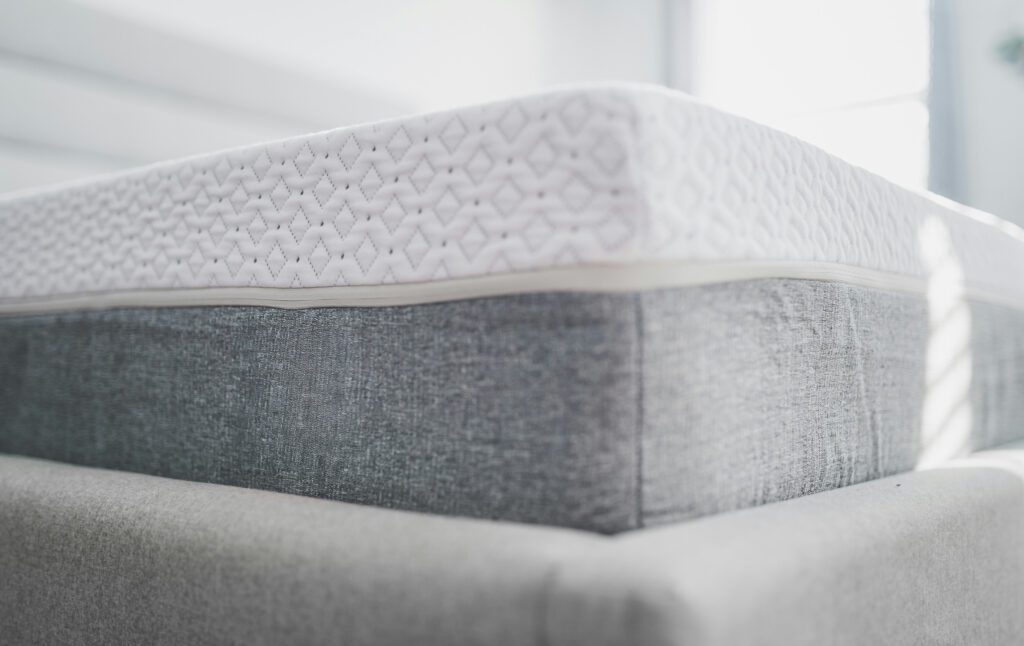Should You Invest in an Adjustable Bed? An Orthopedic Surgeon’s Perspective


Dr. Nicholas Callahan, DO
Partner & Orthopedic Surgeon, Cleveland Orthopedic & Spine Institute
If you’re considering an adjustable bed, you’re probably wondering whether it’s worth the investment or if it’s just a luxury item with no real health benefits. As an orthopedic surgeon who regularly counsels patients on sleep positioning and recovery strategies, I can tell you that for many people, an adjustable bed isn’t about comfort alone. It’s a functional tool that can significantly impact recovery, pain management, and overall quality of life.

Who Benefits Most from Adjustable Beds?
From an orthopedic perspective, several patient populations see significant benefits from adjustable beds:
Post-Surgical Patients
If you’re recovering from joint replacement surgery, an adjustable bed can be transformative. Proper elevation reduces swelling in the operated joint, and the ability to adjust your position makes getting in and out of bed considerably less painful during those critical first weeks of recovery. Better sleep positioning means better healing—it’s that straightforward.
Seniors and Elderly Patients
One of the biggest concerns for older adults is fall risk, and some of the most dangerous moments occur when getting into or out of bed. Adjustable beds help with safe transitions by allowing you to elevate to a sitting position before standing, reducing the risk of falls during these vulnerable moments.
People With Arthritis
If you live with arthritis in your spine, shoulders, hips, or knees, you know that finding a comfortable sleeping position can be a nightly challenge. An adjustable bed allows you to customize your positioning throughout the night, relieving stress points and reducing the morning stiffness that makes getting out of bed so difficult.
People With Acute Low Back Pain
Patients suffering from acute low back pain—whether from muscle spasms, strains, or injuries—benefit tremendously from positions that lessen strain on the lower back. This kind of customized support and relief simply isn’t possible with a standard, flat mattress.
Essential Features to Look For
If you’re shopping for an adjustable bed, not all models are created equal. Here are the features I recommend from a medical standpoint:
Independent Head and Leg Elevation
This is non-negotiable. You need true independent control of both the head and foot of the bed. Post-surgical patients benefit most when their operated joint is elevated above heart level to reduce swelling. The most common mistake I see is patients purchasing beds without enough elevation range. If your legs can’t get above heart level, you’re missing the primary therapeutic benefit for managing swelling.
Split Controls for Couples
If you share a bed with a partner, split controls are particularly important. One person might need an elevated head position for breathing or reflux issues, while the other needs legs elevated and head down for swelling management. Each person’s orthopedic needs are different, and you shouldn’t have to compromise.
Adjustable Base Height
Look for beds where the leg heights on the base itself can be customized. This allows you to set the overall height of the bed based on your body size and mobility limitations—a feature that’s critical for reducing joint strain when getting in and out of bed and can even lessen dislocation risk after hip replacement. I’ll discuss the ideal bed height for different patients in more detail below.
Memory Presets
When you’re adjusting to new post-surgical positions or finding the right angle for chronic pain relief, it may take several nights to discover what works best. Memory presets ensure consistency in sleep positioning, eliminating variability so your body doesn’t have to keep readjusting to different setups every night.
Temperature Control and Massage Features
While these might seem like luxuries, they can actually aid in healing. Cooling options help with post-operative inflammation, while warming features provide relief for muscle strains and sprains. Massage functions can help with muscle tension, though they’re not a substitute for medical treatment.

Choosing the Right Mattress and Bed Height
The bed frame isn’t the only important consideration—your mattress choice and bed height matter significantly as well.
Mattress Selection
I recommend a mattress that provides support without being too firm, which can cause stress points (especially when lying on your side), or too soft, which makes getting in and out of bed more difficult. This balance is particularly important for patients with joint issues. Memory foam and latex mattresses typically work well with adjustable bases, while traditional innerspring mattresses may not flex properly.
Getting the Bed Height Right
Bed height is a critical factor that’s often overlooked, but it can make a dramatic difference in your safety and comfort. The bed should be adjusted so you can place your calves against the side and sit down without bending your knee more than 90 degrees. At the same time, it shouldn’t be so high that you have to raise onto your toes or the balls of your feet to climb in.
The right height reduces strain on your hips and knees when sitting down and standing up—movements you’ll do multiple times every day. For patients recovering from hip or knee surgery, the wrong bed height can actually slow recovery or increase pain. If you’re post-operative or have significant mobility limitations, your physical therapist or surgeon can help determine the ideal height for your specific situation.
Post-Surgical Positioning Guidelines
For post-surgical patients, the features and sleeping positions I recommend depend entirely on which joint was operated on. These guidelines apply to both joint replacement patients and those recovering from other orthopedic surgeries or injuries:
After Shoulder Surgery
A bed that lifts the head in a more upright or semi-reclined position works best, with legs also slightly raised to reduce strain on the lower back and spine. Think of a beach chair shape—this position takes pressure off the shoulder repair while keeping you comfortable.
After Hip Replacement
Hip positioning depends on your surgical approach:
Anterior Hip Approach
Elevating the legs is perfectly acceptable and often ideal. However, sleeping upright or with the head elevated should be avoided in the first three weeks after surgery to prevent undue pressure on the front of the hip incision, which can cause healing issues, swelling, and discomfort.
Posterior or Lateral Hip Approach
Lying flat is generally the safest position for the first 6-12 weeks post-surgery. A mattress that’s too soft, or one that causes too much bending at the waist or knee, increases the risk of hip dislocation. An alternative is sleeping with a pillow between the knees while lying on your back—side sleeping should generally be avoided with posterior or lateral approaches. Elevating the legs or head can put these patients at higher risk of dislocation during the healing period, though dislocation while sleeping is less common than during transitions from lying to sitting or standing.
After Knee Replacement
Sleeping with legs elevated is hugely helpful for the first 3-6 weeks after knee replacement. However, the key is keeping the leg as straight as possible. Leaving it in a bent position while resting increases the risk of painful joint stiffness later in recovery. I recommend positioning the adjustable bed so the legs are elevated while supporting the ankle with pillows to prevent the knee from bending. Never place a pillow directly behind the knee—while it might feel comfortable initially, it trains the joint to stay bent, which works directly against what we’re trying to achieve surgically.
Is an Adjustable Bed Right for You?
I think adjustable beds are a valuable investment for both non-surgical and post-surgical orthopedic problems. They’re not just about comfort—for many of my patients, they’re a functional part of their recovery plan and long-term pain management strategy.
That said, understanding your specific needs and financial constraints are important considerations. An adjustable bed won’t fix structural problems or replace proper orthopedic treatment, but it can be an excellent tool for managing symptoms and optimizing recovery.
The best approach is to discuss your situation with your orthopedic specialist. We can help you understand your specific needs and determine what sleeping habits and technology will work best for your condition. In general, patients should always consult with their doctor or surgeon about their specific needs, especially following surgery, to ensure they’re using their adjustable bed in a way that supports their recovery.
Questions about sleep positioning or recovery after orthopedic surgery?
Contact Cleveland Orthopedic & Spine Institute to schedule a consultation with one of our specialists.

